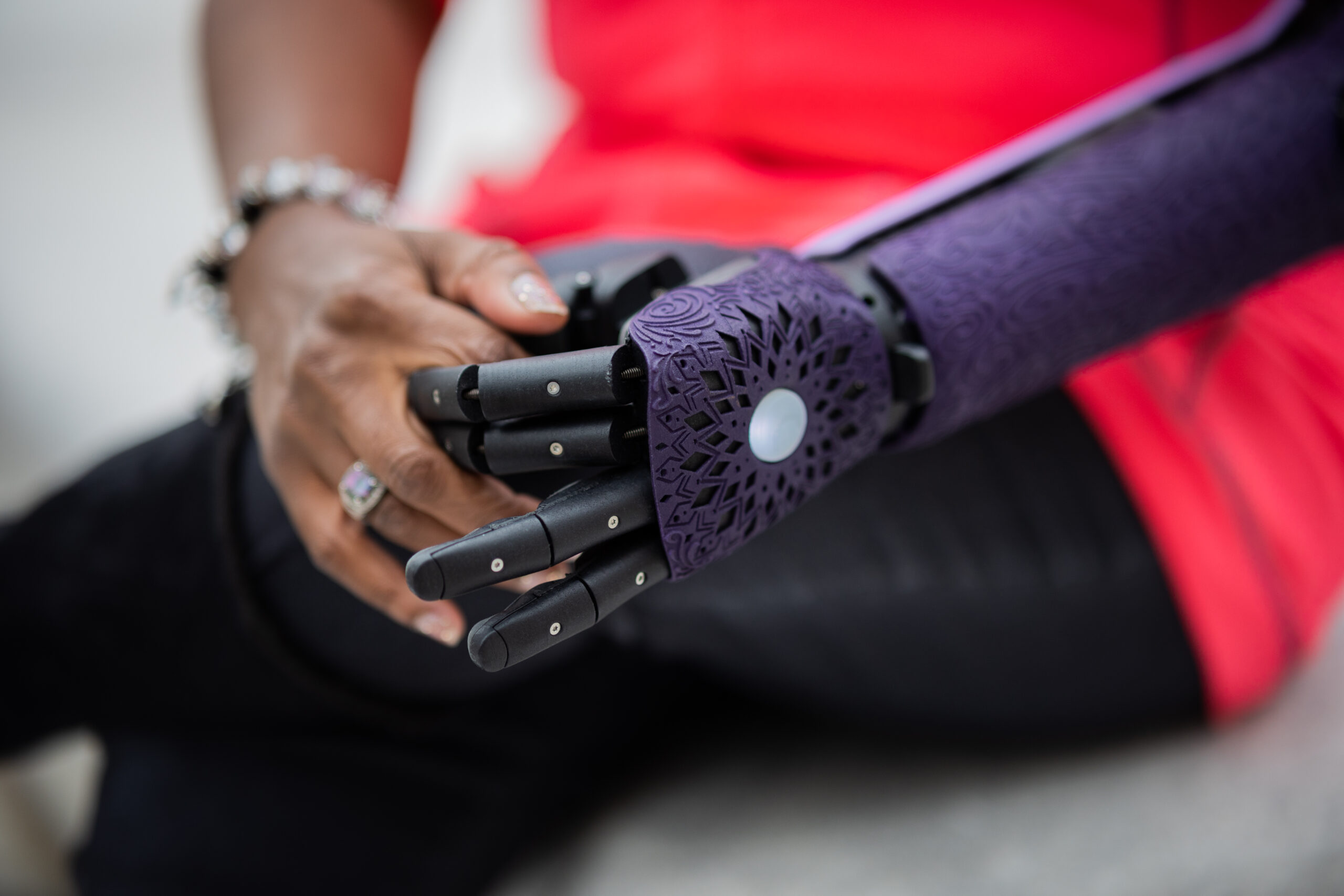The Importance of Patient Involvement in Prosthetic Care
5th July 2023

5th July 2023

There was a recent study published in August of 2022 titled “Patient engagement in cosmetic designing of prostheses: current practice and potential outcome benefits” that sought to determine the importance of customization and design options with regards to the feeling of empowerment in that patient and overall satisfaction rate with their prosthesis.
This study wanted to answer 2 questions:
Of all the surveyed participants, this study found that a majority of prosthetists (80%) typically offer patients at least 1 design option (most prostheses can only be customized once). This number was confirmed by the user survey that stated 75% of the users were presented with at least one design option. Of the users that had the capability to customize their prosthesis, 70% noticed a more positive attitude, improved motivation, compliance, and even function.
Outside of the prosthetic world, there have been many studies conducted on the importance of autonomy. When people are presented with options and choice relative to tasks it has been shown to improve self-efficacy, positive affect, and motivation. By fostering an individual’s ability to make a choice with regards to prosthetic design, it resulted in not only more empowerment from their prosthesis, but also increased wear time and motivation to wear the device.
The study mentioned that prosthetists who do not offer cosmetic options to patients say that it is due to costs. And while you cannot bill insurance for a majority of customization options within a prosthesis, the actual fabrication and material costs of doing so are absurdly minimal. Especially relative to the benefit it provides to the user. So, if you are one of the 20-25% of prosthetists that do not offer custom options, do better.
I had the honor of talking to a long time Hero Arm user, and brand new employee of Open Bionics, Lucas Slusher, regarding his experience with the ability for customization of his prosthesis. Here is what he had to say about the importance of customization:
“Let’s start with the obvious, limb different children and adults face immense pressure to make friends and fit in. Others may see their limb difference in negative ways or be apprehensive about approaching them or accepting them into their social group because they’re ‘different.’
Expressionless prosthetic devices do not help this. They look odd, like they’re trying to be something they aren’t. Uncanny valley vibes may set in, creating another barrier those with limb difference must face. Of course, this leads to negative self-esteem and self-doubt.
The mental well-being of any limb different person, especially children, should be considered during a prosthetic fitting journey. Expression is just as important as function. A prosthesis can be the most functional, but if it lacks expression, it sits in a drawer or under a bed, collecting dust.
Cosmetic designs and expression-centered prosthetics offer a chance for the device to become an extension of personality and a way to show off their interests. Something to be proud of, something that invites discussion and curiosity. These positive aspects not only make those using them more comfortable about their body image, but proud and eager to use the device.
This was also the case for me. I wanted to shed that feeling of conformity that came with a realistic prosthetic limb, because I did find myself hiding it, feeling ashamed of it, or just did not use it.”
I think true user experience and feedback speaks volumes in comparison to not only my professional opinion, but many research articles (or lack thereof) that do not involve user experiences and feedback.
On the topic of patient involvement with regards to prosthetic care. There was recently a Clinical Practice Guideline (CPG) study published in December of 2021 that wanted to establish a consensus on clinical standards of care with regards to unilateral transradial amputees. While I do agree with a majority of these standards as an upper limb specialist, and they did mention that it is important to include the patient in the care, there was one statement, a very important one, that really rubbed me the wrong way. This is it:
“There are a number of limitations associated with this effort. Although some have advocated for the participation of end-users in the development of CPGs, it is unclear whether their input adds validity to the study.27, 28 In this effort, our concern was that the biases a limited number of end-users may associate with their personal prosthetic design and components, and their likely lack of awareness and experience with the range of prosthetic alternatives, might serve to undermine the level of detail sought out in these guidelines.”
Essentially, they did not find it necessary to involve patient opinions, experiences, or studies of the importance of autonomy in humans while developing clinical standards of care for patients. They did not want actual patient experience to “undermine” what they feel is best for patients. Based on the first research article discussed, and the many publications surrounding the importance of autonomy in decision making, and the positive impacts it has on people. I think the most important aspect in deciding what is best for a patient can only be determined by the patient. As a prosthetist, it is my job to have detailed discussions with patients, understand their goals and motivations, then present all viable options to them (pros and cons of each) and involve them in the final decision. I don’t get to decide what is best for the user, but I do get to provide them with options and manage their expectations around the prosthesis they decide is best for them.
https://www.ncbi.nlm.nih.gov/pmc/articles/PMC9372180/
https://journals.sagepub.com/doi/full/10.1177/20556683211065262#appendix